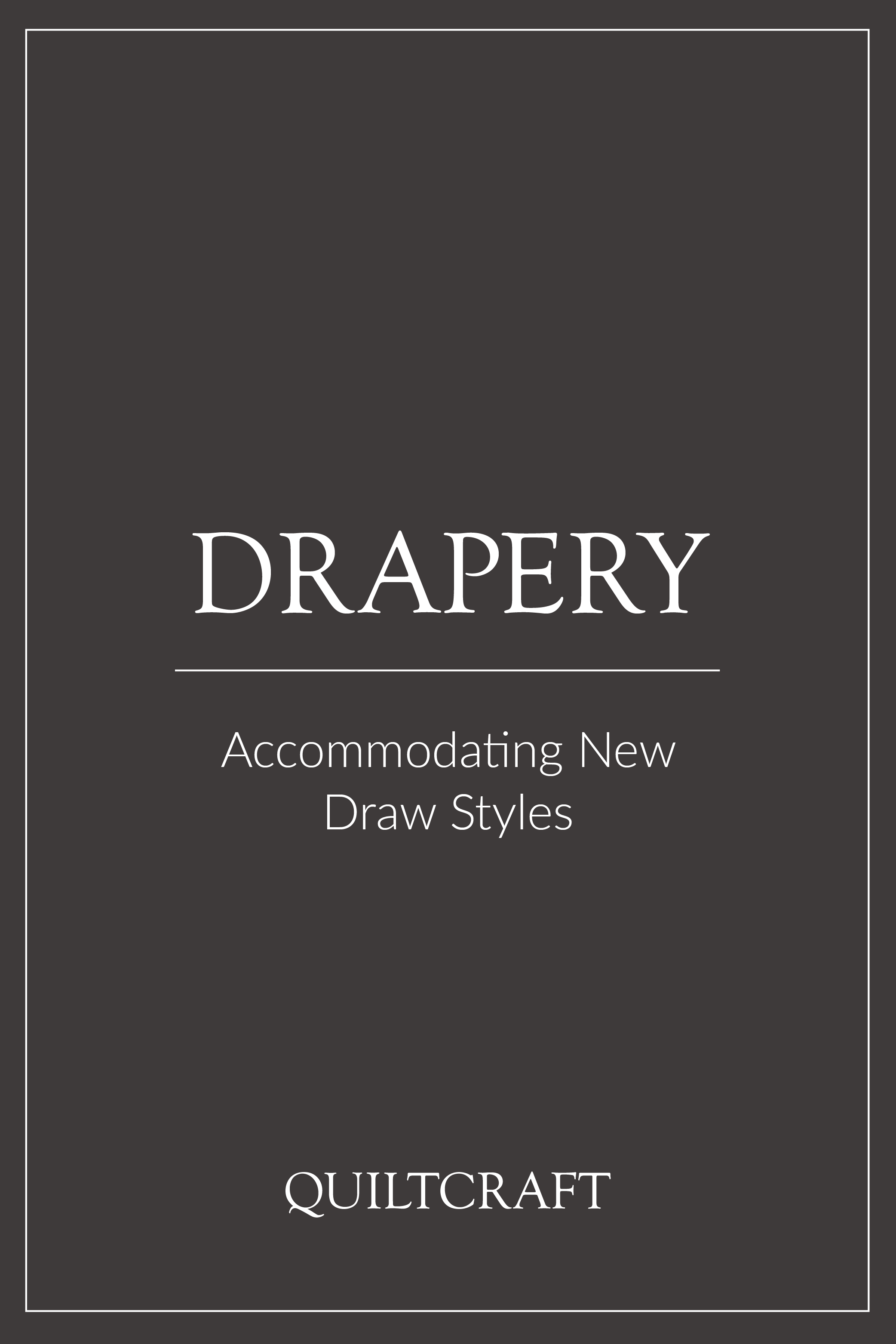Accommodating New Drapery Draw Styles
Drapes are designed to have a specific draw style, then are installed onto a hardware track made specifically to accommodate that draw style. The hardware track is made to traverse using the necessary components, so the drapery falls according to the draw style.
Hanging drapery on a hardware track that it was not specifically manufactured to accommodate a specific draw style is unfortunately not possible due to several issues. The carrier count is one factor that makes this an impossibility. Each hardware track holds a specified number of carriers depending on the fullness of the drape. This allows for the drapery to properly attach to the carriers so it can be drawn open or closed.
For More on Fullness
Check out our blog post called,
What is Drapery Fullness?
Keep In Mind The Components
Master carrier placement is also a contributing reason as to why you cannot reuse existing drapery for a new draw style. Each draw style has its components, like batons, placed differently on the drapery itself and on the hardware track. For example, if you already have drapery configured for an center draw style and you want to reconfigure it for a one-way draw style, you would be unable to use the existing hardware because of the way the baton attaches to the master carrier in the open draw design. The location and style of the baton affects the draw style of your drapery. In this example, a different draw style would compromise the placement and efficacy of the baton. Without proper baton connections, the draw cannot be reinforced.
A Last Resource…
One other option is to rework the drapes and make new hardware. The drapery can be reworked using the same fabric by simply adding new components in the correct place. With this option, the drapes require take-down/ship back to the Quiltcraft factory. While the drapes are reworked, the window will be without drapes temporarily. If you have high occupancy, this option is less desirable as you will be unable to sell the room until the drapes are back up in the window.
We hope this is helpful for your next interior design projects.
If you have any questions about this post or any other drapery resource, don’t hesitate to get in touch! We’re here to help.
Check Out Related Resources



